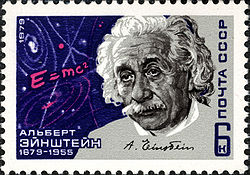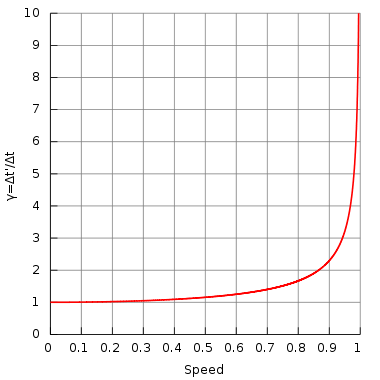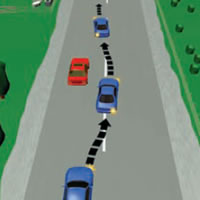Page 1
next page 2
Under construction
skip to page 10
(or not, this story still need a lot of revision before it is complete.)
computer(NET) cell phone
26th January 2012 4.26.10 4.31
30th January 2012 6.03. 54pm 6.09 pm (5.06 difference)
17th February2012 8.00.17pm 8.06 pm (5.43 difference)
7th February 11.54.39am 12.01pm (6.21 difference)
10th May 2.51.46am 3.00am (8.14 diff)
computer is set to www.newearthtime.net
What is gravity really? It is an electromagnetic force. It travels in space, therefore it is a particle (unlike sound, which does not) and it is a "repulsive" force, ie like charges repel, which alters the centre of mass of all atoms. It is not a particle in it's own right, it is part of the electromagnetic force generated by the motion of protons, neutrons electrons and light. (more)
Do you remember Albert Einstein, and relativity?
Two cars are driving along a motorway. The one on the left is red, and it is doing 100 km per hour. The one on the right is blue, and it is travelling slower. The red car is in front by 5 metres. Ironically the speedometer of the blue car also says 100 km/hr.
The red car passes a mark on the road, and shortly after, the blue car passes the same mark. There is a short interval of time between the two events.
If the two cars represent clocks, we know that the two clocks are running at different speeds. This is because when they get to the next marker, (the next hour) the distance between them is now 10 metres (10 seconds), but both speedometers show 100 km/hr still. What is happening here?
If we go back to our clocks, the red clock which is a clock in a cell phone, says 5.00, when the blue clock, the clock on your computer says 4.55.30, so there is a 4.5 minute difference between 5.00 on the clocks. Just reset the clocks you say, so they show the same time. We have done that, but now there is a 4.5 minute difference between them. How could this be so?
What if the red clock is a mechanical clock. It may have been made 2,000 years ago and kept perfect time then. (They didn't have mechanical watches 2,000 years ago, but we should be able to find out if the position of the earth within the galaxy has changed, or the galaxy within the universe has changed.) Perhaps one clock has different software, but both are counting seconds, and both are running at different speeds.
Getting back to our cars, which one is going faster? The red one right? No it is the blue one. Under Einsteins relativity, the faster one travels, the more slowly time passes. This means that if you are travelling at the speed of light, looking back at the light reflected off something, a clock for instance, you will always see the same image frozen in time.
Our clocks are slowly moving apart. Lets say that every day there is three more second's difference between the two. In ten days that will be 30 seconds. In a month it will be 1.5 minutes. In 12 months it will be 18 minutes.
Going to the cars again, now the time difference is going the other way. If it had been three seconds difference, it would now be 1 second. If the gap over 24 hours was 4.5 minutes, now it is 4 minutes and 28 seconds, the next day 4.26, 4.24, 4.21, 4.20, 4.12, 4.10. What is happening now? If the blue car/watch is still travelling at the same speed, showing perfect time, the other one is now speeding up to catch it up, even though it looks as though (in time) it is still ahead. What if it is an illusion? What if the blue clock is still showing the correct time, but the other clock is just showing an approximation of them true time, and the correct time difference between them is still growing at 3 seconds per day. If our red clock is a mechanical watch, it may be running too fast to show the correct time. We have tried to slow it down by adjusting it, but it will not run any slower because the earth has somehow speeded up, and it is unable to slow sufficiently to be of any use because it will always gain time, and we will have to throw it away.
If our blue computer clock can be slowed down it will show, with the right software, the correct time at noon, when the sun is in position. If the sun is still taking 24 hours to go around (earth is still turning 365 days a year), what has changed. The only answer can be that as the planet speeds up travelling through space, the atoms are vibrating at a different speed. The computer's clock counts 10,000 beats to the second, and advances the clock one minute every 60 seconds. If I had been a computer programmer and knew this change was going to happen, I could have written software to compensate, and I could have written other software for my cell phone.
Einstein knew that light travelled at a finite speed. He knew that it took energy to force the photon to the speed of light, and he knew that if something had twice as much mass, it would take twice the force to get it to that speed, so there was a reltionship between mass and velocity (speed).
We have discovered that light is not waves, it is packets of energy, but some of its behaviour is wave-like, and to achieve the speed of light something must have no more mass than a photon, which is almost no mass at all. This is the visible world, the world of light which we live in.
Lorentz factor as a function of speed (in natural units where c=1). Notice that for small speeds (less than 0.1), γ is approximately 1

Albert Einsein. Genius.
Time dilation
In the theory of relativity, time dilation is an actual difference of elapsed time between two events as measured by observers either moving relative to each other or differently situated from gravitational masses. An accurate clock at rest with respect to one observer may be measured to tick at a different rate when compared to a second observer's own equally accurate clocks. This effect arises neither from technical aspects of the clocks nor from the fact that signals need time to propagate, but from the nature of space-time itself.
Acceleration.
In classical mechanics, for a body with constant mass, the acceleration of the body is proportional to the net force acting on it (Newton's second law):
where F is the resultant force acting on the body, m is the mass of the body, and a is its acceleration.
Time dilation
In Albert Einstein's theories of relativity, time dilation in these two circumstances can be summarized:
- In special relativity (or, hypothetically far from all gravitational mass), clocks that are moving with respect to an inertial system of observation are measured to be running slower. This effect is described precisely by the Lorentz transformation.
- In general relativity, clocks at lower potentials in a gravitational field—such as in closer proximity to a planet—are found to be running slower. The articles on gravitational time dilation and gravitational red shift give a more detailed discussion.
Special and general relativistic effects can combine, for example in some time-scale applications mentioned below.
In special relativity, the time dilation effect is reciprocal: as observed from the point of view of either of two clocks which are in motion with respect to each other, it will be the other clock that is time dilated. (This presumes that the relative motion of both parties is uniform; that is, they do not accelerate with respect to one another during the course of the observations.)
In contrast, gravitational time dilation (as treated in general relativity) is not reciprocal: an observer at the top of a tower will observe that clocks at ground level tick slower, and observers on the ground will agree about the direction and the ratio of the difference. There is not full agreement, as all the observers make their own local clocks out to be correct, but the direction and ratio of gravitational time dilation is agreed by all observers, independent of their altitude.
Time dilation due to relative velocity
The formula for determining time dilation in special relativity is:
where Δt is the time interval between two co-local events (i.e. happening at the same place) for an observer in some inertial frame (e.g. ticks on his clock) – this is known as the proper time, Δt ' is the time interval between those same events, as measured by another observer, inertially moving with velocity v with respect to the former observer, v is the relative velocity between the observer and the moving clock, c is the speed of light, and
is the Lorentz factor. Thus the duration of the clock cycle of a moving clock is found to be increased: it is measured to be "running slow". The range of such variances in ordinary life, where v ≪ c, even considering space travel, are not great enough to produce easily detectable time dilation effects and such vanishingly small effects can be safely ignored. It is only when an object approaches speeds on the order of 30,000 km/s (1/10 the speed of light) that time dilation becomes important.
Time dilation by the Lorentz factor was predicted by Joseph Larmor
(1897), at least for electrons orbiting a nucleus. Thus "... individual
electrons describe corresponding parts of their orbits in times shorter
for the [rest] system in the ratio : "
(Larmor 1897). Time dilation of magnitude corresponding to this
(Lorentz) factor has been experimentally confirmed, as described below.
"
(Larmor 1897). Time dilation of magnitude corresponding to this
(Lorentz) factor has been experimentally confirmed, as described below.




